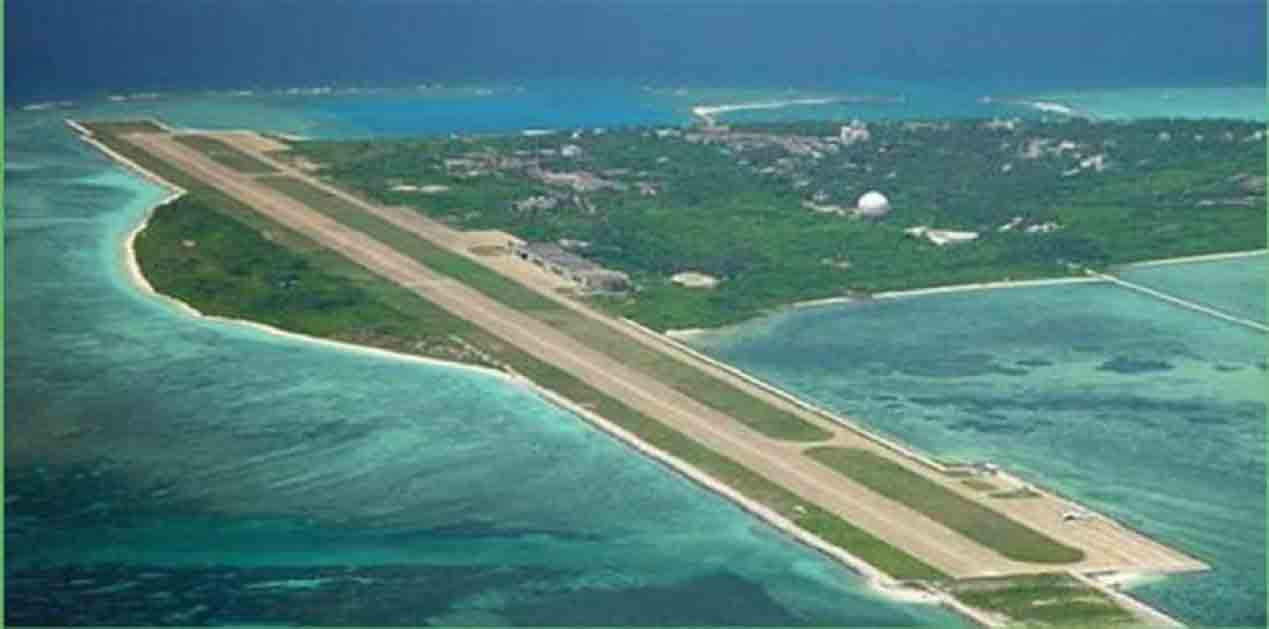Looking into 2019, the South China Sea is like a lit fuse which can lead to conflagration without warning. The rhetoric between China and the US is becoming so incandescent that avoidance of a violent naval clash has become a main subject of discussions between the US Defence Secretary and his Chinese counterpart. Mattis’ departure could, possibly, lead to an even tougher approach.
Despite assurances to the contrary, Chinese militarisation of the islands in the Paracels and the Spratlys clusters continues so as to host military aircraft, naval ships and air defence batteries. The scale of this activity has led the commander of the US Indo-Pacific Naval Command, Admiral Davidson, to testify, at his Senate confirmation hearing, that, short of war, US Navy would be at a disadvantage vis-a-vis the Chinese Navy given the present force balance. The US has therefore disinvited the Chinese Navy from the RIMPAC naval exercise as a sign of strong disapproval. Last September, for the first time, the Chinese Navy used, in an ‘unsafe and unprofessional’ manoeuvre, a Luyang, destroyer to obstruct a guided missile destroyer, USS Decatur, from carrying out its FONOP (‘freedom of navigation patrol’) sailing through the Spratlys’, Gaven and Johnson Reefs.
There is a further turn in these trends as reports emerge of the Pentagon planning more focused set of naval exercises in the South China Sea and the Taiwan Strait; last year saw many more FONOPs and flights of B-52 nuclear capable bombers. UK is considering a naval base in Singapore or Brunei and both UK and France, are, in a first, carrying out their own FONOPs although these appear to be somewhat symbolic. As the naval exercises and patrols of other countries increase in these waters, the US Navy has also carried out at least three passages through the Taiwan Straits, evoking strong protests from China against the backdrop of rising China-Taiwan tensions; although evoking no public Chinese protests even amidst newspaper reports of a possible US-Australian coordination while an Australian frigate passed through the Taiwan Strait in September. With the former openly criticising Chinese policies in Xinjiang and putting restrictions on Chinese investments, largely aimed at high-tech companies, in their respective markets, these developments seem to be part of a larger gathering confrontation between the West and China - such an open confrontation would be unexpected until recently. Economic leverage is being deployed against China, sensing a certain vulnerability of its domestic economy, as epitomised in the ongoing trade war between US and China.
Chinese officials and commentators have never ruled out the declaration of ADIZ (Air Defence Information Zone) in the South China Sea along the lines of its 2013 ADIZ over the East China Sea, covering the Senkaku islands. Rather, a Chinese Deputy Foreign Minister asserted, in 2016, that China had the right to establish it ‘if our security is threatened’. The Chinese assertions of the territorial rights echo President Xi’s language about protecting their forefathers’ bequest. It is worth recalling that the assertion of the so-called Chinese historical rights over the Paracels and Spratlys land features, along with the undefined maritime claims marked by the ‘Nine Dash Lines’, have been a platform for President Xi’s ascent to near absolute power at home. Thus, the domestic and the external Chinese narratives on the South China Sea issues are linked to the current power politics in the country. There have been recent reports about President Xi facing domestic political pressure about mishandling the trade dispute with the US at a time when the Chinese economy itself is showing signs of weakness.
Although the ASEAN countries are anxious about Chinese militarisation of the various land features, they also have anxiety about the peace in the region being disrupted which would further weaken this organisation, and thereby cause the somewhat fragile security architecture built around it to collapse. The Chinese BRI (‘Belt and Road Initiative’) projects, of which MSR (‘Maritime Silk Route’) is a part, still remain a powerful incentive for tightrope walking by these countries, including those with competing territorial claims; this is a strong regional geopolitical trend notwithstanding the recent push-back by some key beneficiaries.
Paradoxically, it is happening even with countries like the Philippines which have had quite a few instances of being subjected to Chinese military pressure. One reason for such somewhat accommodative approach is that the US naval stand-off with the Chinese Navy is unrelated to the instances of military stand-offs between China and the other claimant littoral countries; these countries are strengthening their own military and naval capabilities with the help of the US, Japan and South Korea.
As at present, the South-East Asian countries do expect that there would be Japanese and US investments in the infrastructure projects although the scale of Chinese BRI commitments is higher, in addition to the strong trade and economic ties between the ASEAN countries and China, in bilateral, ASEAN-China, and ASEAN +3 (ASEAN plus China, Japan and South Korea) formats. Further, there has been some forward movement for a Code of Conduct between them on the South China Sea, with an agreement made upon a single negotiating text. Some CBMs (Confidence Building Measures) have also been agreed upon and regular informal meetings, at the level of defence ministers, have taken place between the two sides. Last October, there was also a first ever naval exercise between ASEAN and China.
The Chinese-US confrontation in the South China Sea is part of a larger global power play where the limits of circumscription of Chinese power are being tested - that is, to limit it within the First Islands Chain. Despite concerns about the heavy military footprint on the land features and the manipulative, coercive use of the ‘Nine Dash Line’ claim vis-a-vis individual countries, the ASEAN feel, based on past experience, that international heat on China makes it more accommodative of their concerns. A certain US strategic ambiguity towards the militarisation of the land features remains an element in their assessment of the security scenario. There were credible reports, last May, that the Pentagon had asked the US Navy to defer their FONOP plans due to expected Chinese help in the US diplomacy towards North Korea. As this US ambiguity and the South-East Asian countries’ balancing acts endure, the Chinese leadership sees a window of opportunity for its militarisation plans.
Looking into the New Year, the calibrated conduct of the US-China naval stand-offs is likely to continue and there is a good possibility that any escalation would be contained should a violent flare up likely arise. Chinese ADIZ in the South China Sea is unlikely considering that it does not control the majority of Spratlys land features; The Hague Arbitration Court declared, in 2016, that the Spratlys do not form an island cluster and, on this legal basis, the Chinese declared baselines around the Paracels cluster have no validity either. Apart from its geographical untenability vis-à-vis Chinese maritime claims, strategic ambiguity inherent in an unenforceable ADIZ, much like the one in the East China Sea, would vitiate its regional diplomacy.
Whilst India’s strengthening naval ties with ASEAN countries are becoming a regional factor along with its recent Indo-Pacific diplomatic moves, it is interesting to note a comment by the current Chief of Naval Staff to an Indian TV channel, last March, that the Indian Navy can tilt the balance in the South China Sea, should a situation demand so. Post-Doklam, it is possible that such thoughts might be crossing the minds of our strategic planners, but the precise circumstances thereof – and the understandings with the US – still remain in the realm of speculation.
The author is a former Indian ambassador who frequently writes on maritime and security affairs.
(The paper is the author’s individual scholastic articulation. The author certifies that the article/paper is original in content, unpublished and it has not been submitted for publication/web upload elsewhere, and that the facts and figures quoted are duly referenced, as needed, and are believed to be correct). (The paper does not necessarily represent the organisational stance... More >>
Image Source: http://media.ws.irib.ir/image/4bk24d8e8ebbf93u6g_800C450.jpg











Post new comment